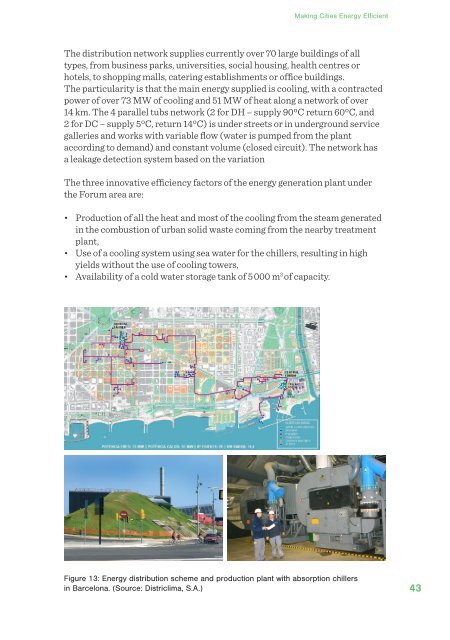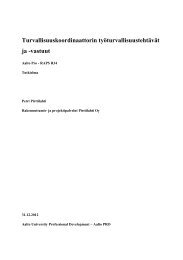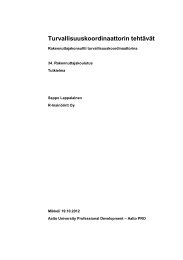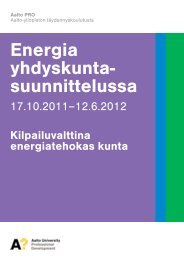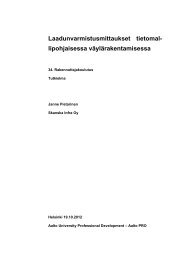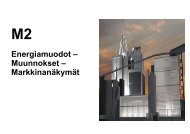Urban and Regional Planning adopting RES - Sitra
Urban and Regional Planning adopting RES - Sitra
Urban and Regional Planning adopting RES - Sitra
Create successful ePaper yourself
Turn your PDF publications into a flip-book with our unique Google optimized e-Paper software.
Making Cities Energy Efficient<br />
The distribution network supplies currently over 70 large buildings of all<br />
types, from business parks, universities, social housing, health centres or<br />
hotels, to shopping malls, catering establishments or office buildings.<br />
The particularity is that the main energy supplied is cooling, with a contracted<br />
power of over 73 MW of cooling <strong>and</strong> 51 MW of heat along a network of over<br />
14 km. The 4 parallel tubs network (2 for DH – supply 90ºC return 60ºC, <strong>and</strong><br />
2 for DC – supply 5ºC, return 14ºC) is under streets or in underground service<br />
galleries <strong>and</strong> works with variable flow (water is pumped from the plant<br />
according to dem<strong>and</strong>) <strong>and</strong> constant volume (closed circuit). The network has<br />
a leakage detection system based on the variation<br />
The three innovative efficiency factors of the energy generation plant under<br />
the Forum area are:<br />
• Production of all the heat <strong>and</strong> most of the cooling from the steam generated<br />
in the combustion of urban solid waste coming from the nearby treatment<br />
plant,<br />
• Use of a cooling system using sea water for the chillers, resulting in high<br />
yields without the use of cooling towers,<br />
• Availability of a cold water storage tank of 5 000 m 3 of capacity.<br />
Figure 13: Energy distribution scheme <strong>and</strong> production plant with absorption chillers<br />
in Barcelona. (Source: Districlima, S.A.)<br />
43


